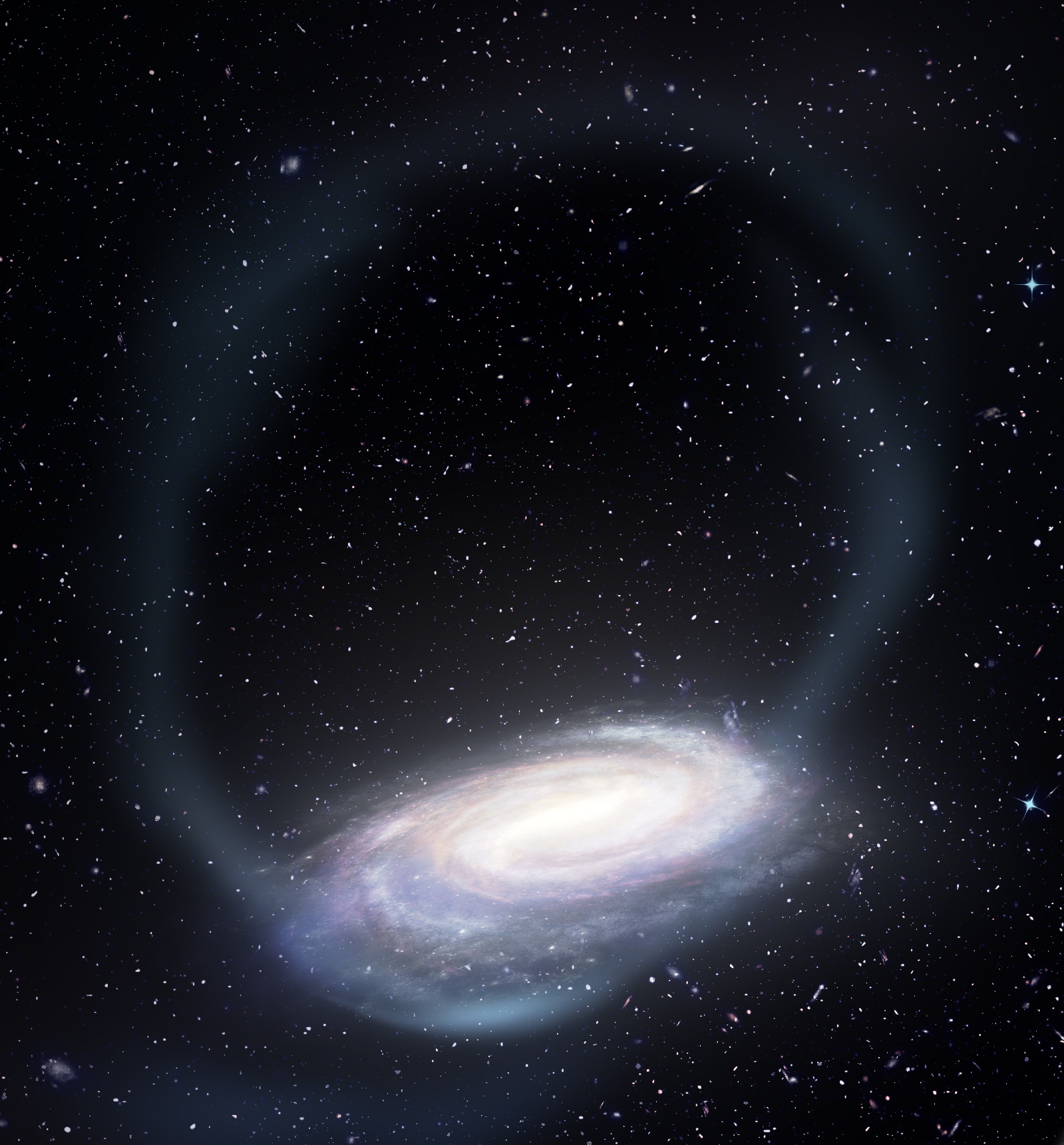stellar streams
the remnants of galaxy accretion
Artist’s impression of the thin stream of stars torn from the Phoenix globular cluster, wrapping around our Milky Way • Credit: James Josephides (Swinburne Astronomy Productions) and the S5 Collaboration
The Milky Way’s stellar halo is a galactic graveyard that contains a record of past accretion events. As dwarf galaxies and globular clusters fall into the Milky Way, they become tidally unbound, forming spatially coherent streams and ultimately mixing into the halo. In my recent work I have used streams and accreted stars to investigate the origin of the Fimbulthul stream; the galactic mass-metallicity relation at early times; and the evolution of lithium in dwarf galaxies.
Fimbulthul
In my 2020 paper I brought together my expertise with the GALAH data products with my knowledge of the complex, massive globular cluster ω Centauri gained during my PhD. The origin hypothesis for ω Centauri is that it is the stripped core of a dwarf galaxy accreted by the Milky Way. The Fimbulthul stellar stream had previously been associated with ω Centauri using kinematics alone, and I was able to show using abundances of s-process and light elements from GALAH that Fimbulthul could be likely chemically tagged to the cluster. This was the first chemical tagging of a kinematic structure to ω Centauri.
Phoenix
Some streams have much lower mass progenitors — in some cases they are thought to be the remnant of a ‘‘classical’’ globular cluster. Such streams are of interest because there is an observed ‘‘floor’’ in Galactic globular cluster metallicity distribution. This has been interpreted as evidence that it was not possible to form globulars in very metal-poor environments. But Southern Stellar Stream Spectroscopic Survey (S5) demonstrated that the Phoenix stream originated as a globular cluster with a metallicity lower than any cluster in the Milky Way. The Phoenix system proves that very metal-poor environments were nevertheless massive enough to form globular clusters that survived almost to the present day. Globular clusters are a critical site of early star formation, and it is important to know that the dispersion in the galactic mass-metallicity relation must be large enough to accommodate at least a few systems like Phoenix. I will lead future studies with S5 and GALAH data that will allow us to study the elemental abundances of these very low metallicity streams, to understand how common objects like Phoenix are, and whether they exhibit the same complex abundance patterns as extant clusters.
Gaia-Enceladus-Sausage
As well as the plethora of stellar streams, the data from the Gaia mission has demonstrated that about half of the local halo is likely accreted from a single dwarf galaxy known as Gaia-Sausage-Enceladus. Observing stars accreted from dwarf galaxies allows for a much more detailed inspection of those galaxies than would be possible in situ, even in the Local Group. I used stars from the Gaia-Sausage-Enceladus accretion event to demonstrate that the cosmological lithium problem, the gap between the predicted primordial abundance and the baseline abundance in old stars, is universal and not just a quirk of the Milky Way. GALAH abundance data for accreted stars in the Milky Way enable an array of projects testing chemical evolution models of low-mass galaxies. We do not have to wait for 30-metre class telescopes; we can do this work right now with our current suite of facilities, and we observe these stars for ‘‘free’’ as part of GALAH.
